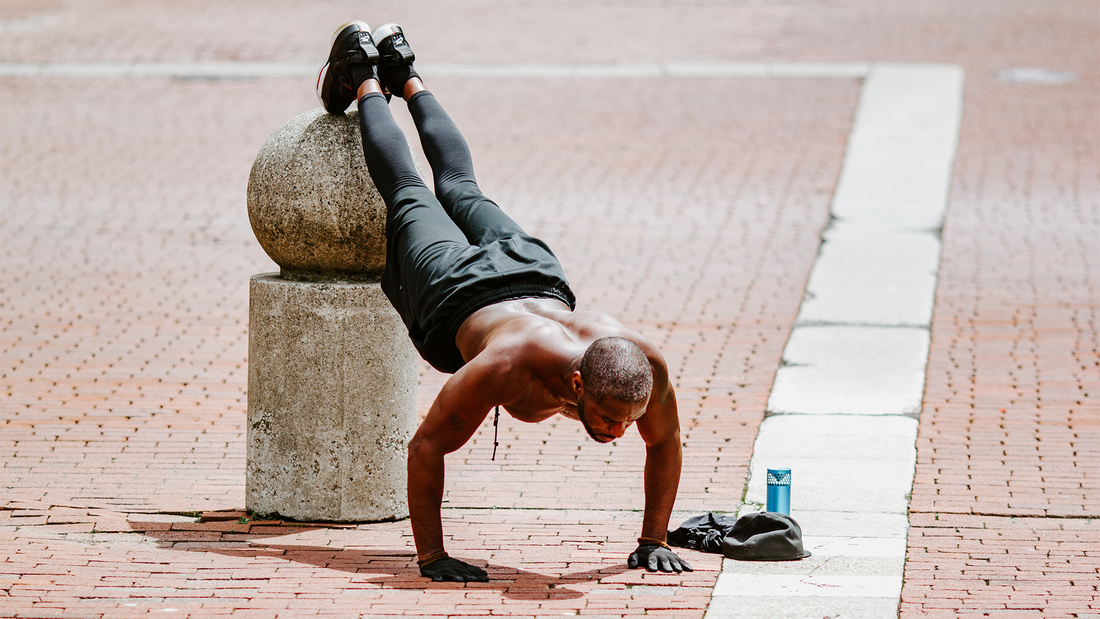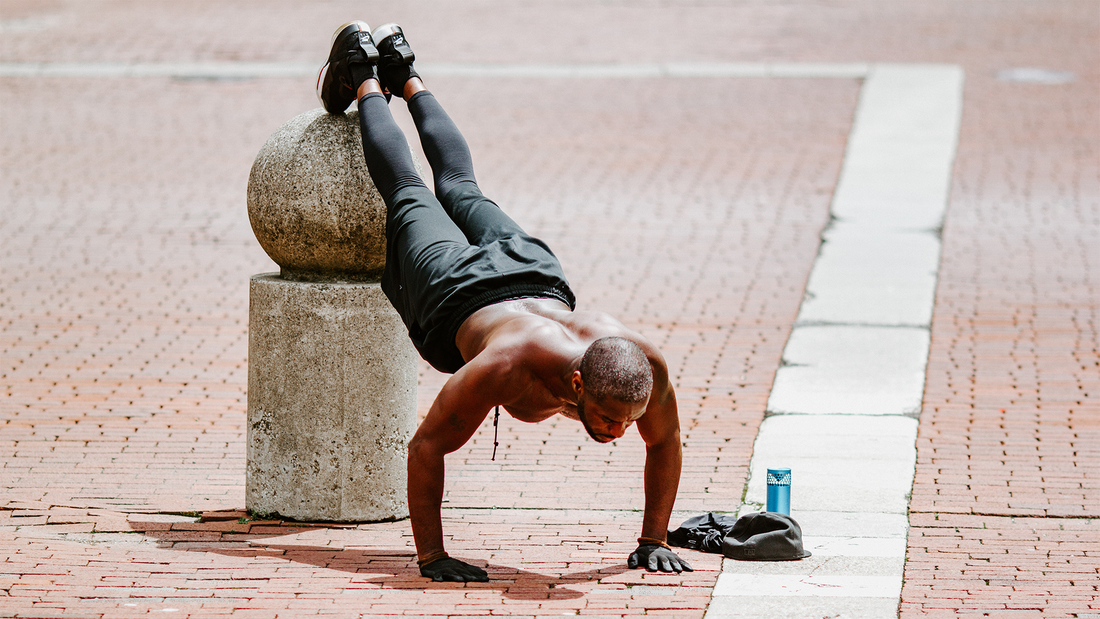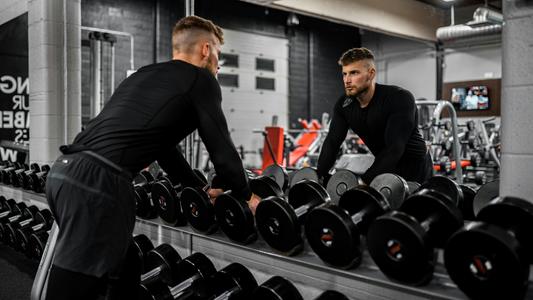

Do Bodyweight Exercises Build Muscle?
Bodyweight exercises use your own weight as the primary source of resistance against gravity. These workouts are often convenient, but do bodyweight exercises build muscle? It is possible to gain a significant amount of lean muscle mass through bodyweight exercises, especially if you are new to exercise or resistance training. However, it can be hard to keep gaining muscle mass over time without any equipment.
Let ZOZOFIT show you how you can build muscle by doing bodyweight exercises.
Do Bodyweight Exercises Build Muscle?
Some studies comparing bodyweight and loaded exercises indicate similar results in muscle gains. A study on no-load training reported a similar increase in muscle size between groups that did elbow flexion exercises, or bicep curls, with a heavy load and with body weight alone. Can bodyweight exercises build muscle? The findings of this study suggest that the short answer to the question is yes.
Other studies demonstrate similar increases in pectoral and tricep muscle thickness between participants who did bench presses and bodyweight exercises with the position adjusted to the same load twice a week for eight weeks. Only the participants in the bench-press group saw significant increases in bicep thickness. In other words, bodyweight exercises can build muscle but typically do not produce as much mass as loaded exercises.
A recent informal experiment undertaken by identical twins to compare the results of bodyweight and loaded exercises confirms that both methods build muscle and increase strength. After a 12-week regimen of training five days a week with similar lifts and movements done loaded and with bodyweight, the weightlifting twin built more muscle, but also reported more inflammation and soreness. The twin who did bodyweight exercises increased his bench press capacity by 40 kilograms and his deadlift capacity by 30 kilograms.
How Do Bodyweight Exercises Work?
Bodyweight exercises involve repeated motions that cause muscle fibers to move against resistance and result in muscle hypertrophy or growth. The main advantage of bodyweight exercises is that you can increase strength and build muscle mass without the need for additional equipment. You can do bodyweight exercises at home, when traveling, or in any location rather than having to go to a gym.
If you are new to resistance training, you may be able to develop a significant amount of muscle by doing bodyweight exercises. It is also possible to maintain muscle tone with your body weight. More experienced resistance trainers will need to modify exercises to increase the amount of body weight on target muscle groups in order to keep challenging muscles and promoting growth.
You can build muscle by doing bodyweight exercises as long as you distribute your weight to provide a sufficient amount of resistance. You can keep building muscle by increasing the number of repetitions of bodyweight exercises and learn to do more challenging modifications of exercises.
Fitness experts recommend that beginners start with two sets of 10 to 12 reps, while more advanced bodyweight trainers can do three or four sets of 15 to 20 reps.
What Are the Best Bodyweight Exercises?
You are probably already familiar with several basic bodyweight exercises. Push-ups are upper body exercises that strengthen the arms, chest and shoulders. Two of the most popular bodyweight exercises for the lower body are lunges and squats, both of which target the glutes, hamstrings and quads.
Exercises that redistribute more of your body weight to specific areas are more effective for building muscles. This is why pull-ups are more challenging than push-ups. You should do a variety of bodyweight exercises to engage more muscle groups. The best way to track your progress is to take 3D body scans by using the ZOZOFIT app.
In addition to upper and lower body exercises, you can also do total bodyweight exercises. Some of the most effective bodyweight exercises that engage your whole body include burpees, mountain climbers and plank jacks. Look up how to do each exercise, watch videos and practice good form to build muscle with bodyweight exercises.
How Do You Increase the Challenge of Bodyweight Exercises?
When your goal is to build muscle, you can learn how to do more challenging variations of most bodyweight exercises. For instance, doing push-ups on a decline with your feet on a raised surface and your hands on a lower level increases the distribution of weight on your upper body. Once you know how to do a bodyweight exercise and can do several sets of reps while maintaining good form, you should look for variations to increase resistance or target more muscles.
Another example of increasing challenge is to work your way up from doing standard squats to pistol squats. This exercise involves squatting on one leg while keeping your other leg extended straight out in front of your body. Most bodyweight exercises can be modified to increase or reduce the distribution of body weight on a particular set of muscles.
So, can bodyweight exercises build muscle for experienced exercisers? The answer is yes, as long as you are willing to do a lot of reps and learn how to do more intense bodyweight exercises.
Your body weight is the maximum limit of resistance for bodyweight exercises. Depending on the exercise, it may be possible to distribute more or less of your weight to the muscles and muscle groups that you want to develop. If your muscle growth plateaus but you want to keep building muscle, you should consider the pros and cons of lifting weights. You can also combine bodyweight and resistance training to get the advantages of both types of exercise.
Can You Keep Building Muscle by Doing Bodyweight Exercises?
Do bodyweight exercises build muscle? Yes, to a point. When you reach that point, you will need to increase resistance beyond your body weight to build more muscle mass. One of the main challenges of training exclusively with bodyweight exercises is that it is harder to quantify your increase in strength. Track the results of your fitness regimen by taking 3D body scans with the ZOZOFIT app.

![zf-w-[168px] zf-h-[40px]](http://zozofit.com/cdn/shop/t/15/assets/logo-desktop.png?v=117713855448369080381753069598)




